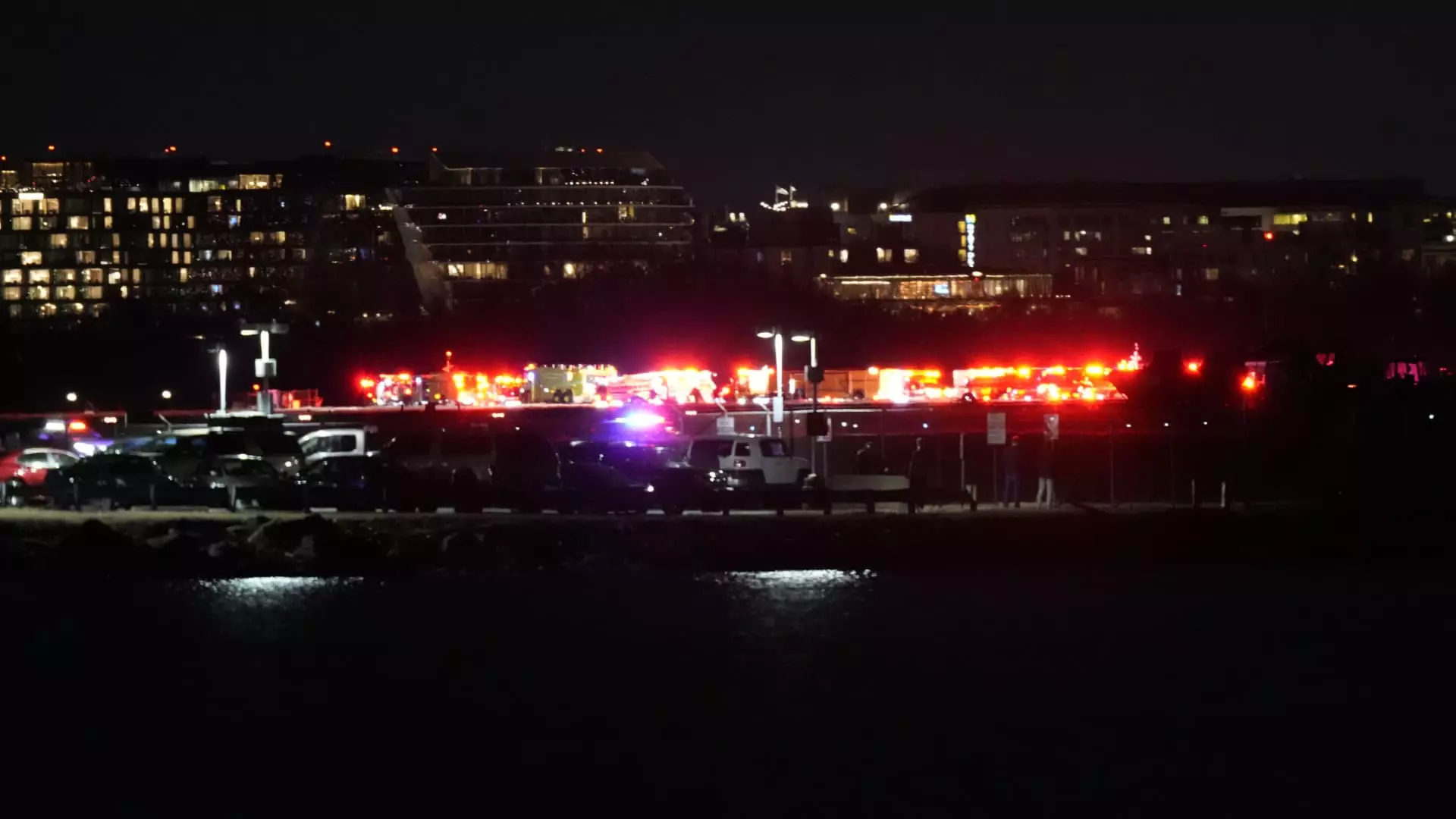On Wednesday night, a significant aviation incident occurred just outside Washington, D.C., involving a regional jet and a military helicopter. An American Airlines regional jet, operated by PSA Airlines, collided with a Sikorsky H-60 helicopter while preparing to land at Ronald Reagan Washington National Airport. This alarming event has raised safety concerns and invites scrutiny of air traffic control systems and emergency response protocols amidst the ongoing investigation.
The collision took place at approximately 9 p.m. ET when Flight 5342 was approaching Runway 33 after arriving from Wichita, Kansas. Onboard the Bombardier CRJ700 were 64 individuals: 60 passengers and four crew members. Reports have suggested that the incident not only endangered lives within the aircraft but also implicated the military helicopter, leading to speculation about the coordination between civilian and military air traffic in densely populated airspace.
According to the Federal Aviation Administration (FAA), local authorities reported that at least one of the aircraft ended up in the Potomac River, indicating the severity of the impact. The FAA promptly initiated a response, and the National Transportation Safety Board (NTSB) has assumed control over the investigation, setting a high priority on understanding the circumstances that led to this dangerous encounter.
In the aftermath of the crash, emergency responders inundated the area, as images circulating on social media revealed substantial activity from rescue teams. The registration of both aircraft—crucial pieces of information for the investigation—became the subjects of a meticulous examination. Eyewitnesses described a chaotic scene with emergency vehicles swarming the airport, highlighting the urgent nature of the response needed in such critical circumstances.
Due to the incident, Ronald Reagan Washington National Airport experienced complete closure, significantly affecting air traffic in the region. The FAA’s announcement indicated immediate regulatory scrutiny that would encompass the procedures and protocols that govern airspace around one of the busiest airports in the United States.
This collision comes at a time when aviation safety is of the utmost importance to the federal authorities and the traveling public alike. American Airlines acknowledged the incident on social media, expressing their commitment to transparency and keeping the public informed as updates unfold. Additionally, the White House confirmed that President Donald Trump was briefed on the situation, underscoring the incident’s seriousness and potential implications for national aviation safety policies.
The NTSB’s investigation is expected to evaluate not only the direct causes of the collision but also the broader factors contributing to the potential miscommunication between civilian and military aviation operations. As investigations progress, many stakeholders, including airlines, regulatory bodies, and safety advocates, will be keenly observing the developments to ensure stringent safety measures are in place to prevent similar incidents from occurring in the future.
While the immediate effects of the collision are being managed, the long-term ramifications for aviation safety and regulation in the United States are yet to unfold. The incident serves as a stark reminder of the intricate


Leave a Reply